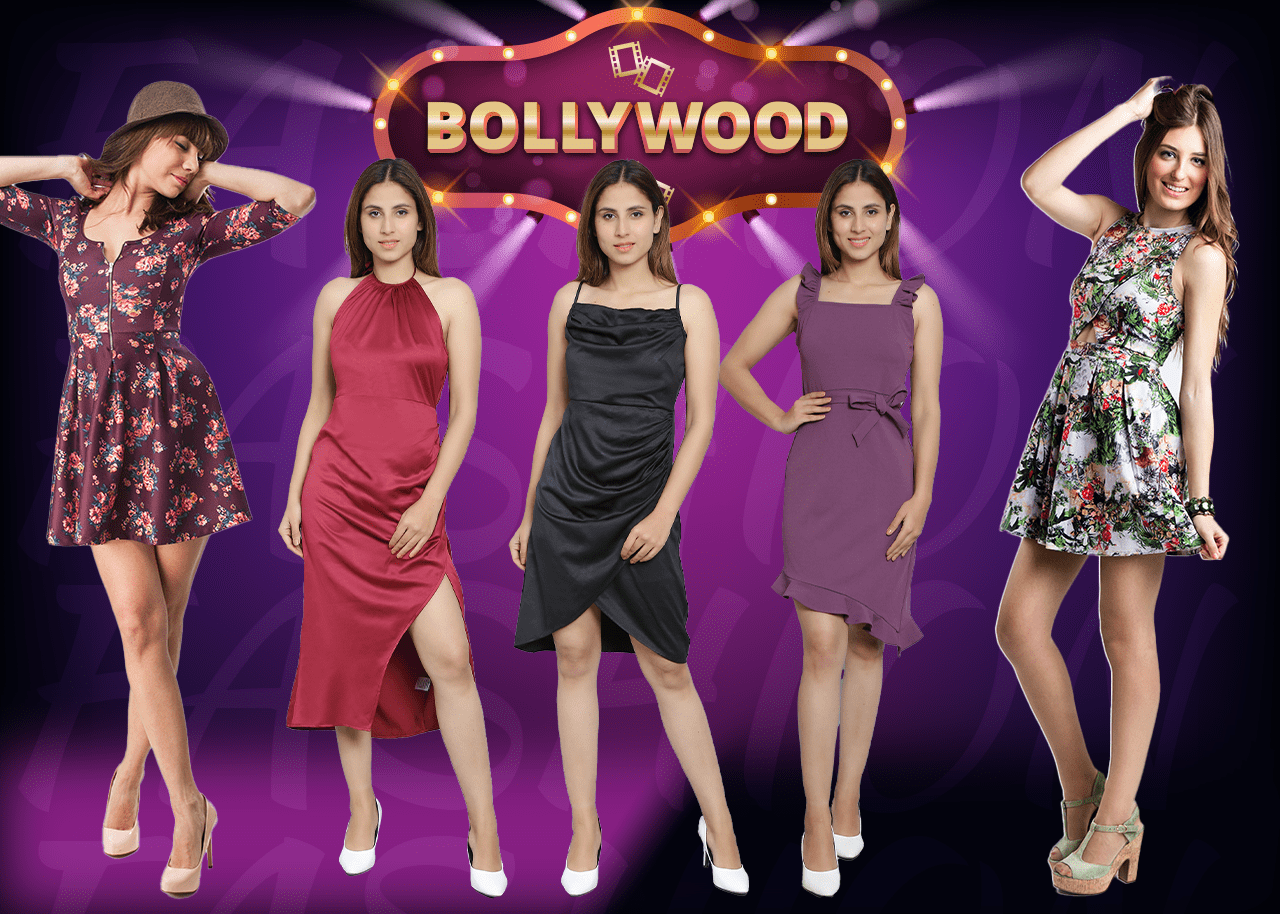
When it comes to fashion and style, Bollywood has long been a beacon of inspiration for people worldwide. The world of Bollywood, a term used to describe India's vibrant and prolific film industry, is not only renowned for its captivating movies but also for the breathtaking fashion and Bollywood dresses that grace the screen. In this article, we delve into the world of Bollywood dresses, exploring their impact on global fashion trends and celebrating their enduring allure.
The journey of Bollywood fashion is a story of evolution, creativity, and cultural diversity. It encapsulates a fusion of traditional and contemporary elements, making it a mesmerizing reflection of India's rich heritage and modern sensibilities. Bollywood dresses, in particular, play a pivotal role in shaping the industry's fashion landscape.
1. Traditional Elegance: Sarees
No discussion of Bollywood dresses would be complete without paying homage to the timeless saree. This six to nine-yard piece of artistry has graced the silhouettes of legendary actresses from Nargis to Madhuri Dixit to Deepika Padukone. Bollywood sarees are an embodiment of grace and allure, with intricate embroidery, rich fabrics, and exquisite draping techniques.
One iconic Bollywood moment that continues to resonate is Madhuri Dixit's "Dhak Dhak" dance sequence in the film "Beta." Her red chiffon saree, embellished with golden sequins and paired with a sensuous backless blouse, became an instant sensation. This look not only defined an era but also established the saree as a symbol of timeless sensuality and femininity.
2. Contemporary Glamour: Lehengas
Lehengas, a three-piece ensemble consisting of a skirt, blouse, and dupatta, have become staples of Bollywood fashion. These dresses effortlessly combine traditional charm with modern aesthetics, making them a popular choice for red carpet events, weddings, and movie promotions.
Deepika Padukone's ethereal look in "Padmavat" showcased the grandeur of lehengas. She donned exquisite lehengas with intricate zardozi work, traditional jewelry, and elaborate hairstyles that left audiences in awe. This look not only celebrated India's regal history but also set a new benchmark for opulent Bollywood dresses.
3. Glamorous Ensembles: Gowns
As Bollywood continues to evolve, it embraces global fashion trends, including glamorous gowns. These dresses often feature intricate detailing, shimmering fabrics, and daring cuts that highlight the curves and elegance of leading ladies. Aishwarya Rai Bachchan's red carpet appearances at international film festivals have garnered worldwide attention. Her choice of designer gowns, adorned with Swarovski crystals and intricate beadwork, exemplifies Bollywood's transition into the global fashion arena. These gowns symbolize the marriage of Indian grace and international glamour.
4. Fusion Finesse: Indo-Western Attire
In recent years, Bollywood has embraced fusion fashion, giving rise to a unique blend of Indian and Western styles. This fusion is evident in the emergence of Indo-western dresses, such as dhoti pants paired with crop tops, cape gowns with Indian embroidery, and floor-length anarkali dresses with modern cuts.
Sonam Kapoor, often referred to as Bollywood's fashionista, has championed this trend. Her red carpet appearances and promotional events are a testament to her bold fashion choices, including avant-garde Indo-western ensembles. These Bollywood dresses symbolize the industry's willingness to experiment and push the boundaries of traditional fashion.
5. Bridal Elegance: Wedding Lehengas
Wedding Bollywood dresses hold a special place in the hearts of millions. Bollywood has had a significant influence on Indian bridal fashion, with actresses donning exquisite wedding lehengas that set trends for brides across the country.
Kareena Kapoor Khan's wedding look in "Veere Di Wedding" combined tradition with modernity. Her regal lehenga, designed by Manish Malhotra, featured intricate embroidery, pastel hues, and a contemporary blouse design. This look showcased the evolving preferences of modern Indian brides who seek both cultural richness and contemporary elegance in their wedding attire.
The influence of Bollywood dresses extends far beyond the confines of the silver screen. They have left an indelible mark on the global fashion landscape, inspiring designers, fashion enthusiasts, and everyday individuals alike. Here's how Bollywood dresses have made their mark:
1. Red Carpet Couture
Bollywood dresses have become a staple on international red carpets, from the Oscars to the Cannes Film Festival. Actresses like Priyanka Chopra and Deepika Padukone have graced these prestigious events in stunning designer gowns, making headlines and further solidifying Bollywood's presence in the global fashion conversation.
2. Bridal Trends
Indian brides draw immense inspiration from Bollywood when choosing their wedding attire. From the choice of colors and embroidery styles to the overall aesthetics, Bollywood has a profound influence on what's considered fashionable in the bridal world.
3. Celebrity Collaborations
Bollywood actresses often collaborate with leading fashion designers, resulting in exclusive clothing lines and collections. These partnerships allow fans to embrace Bollywood fashion in their everyday lives, bridging the gap between reel and real.
4. Fashion Retail
Retailers and e-commerce platforms worldwide offer Bollywood-inspired fashion collections, catering to a diverse clientele seeking the glamour and style synonymous with Bollywood.
Bollywood dresses have transcended cinema, becoming icons of style, cultural richness, and timeless elegance. They showcase India's sartorial diversity while leaving an indomitable imprint on global fashion trends. Whether it's the grace of sarees, the opulence of lehengas, or the allure of fusion ensembles, Bollywood dresses continue to inspire and captivate fashion enthusiasts around the world. In a world of ever-evolving fashion, Bollywood remains a timeless source of inspiration, reminding us of the enduring allure of Indian couture.
Your email address will not be published.
Comments (0)